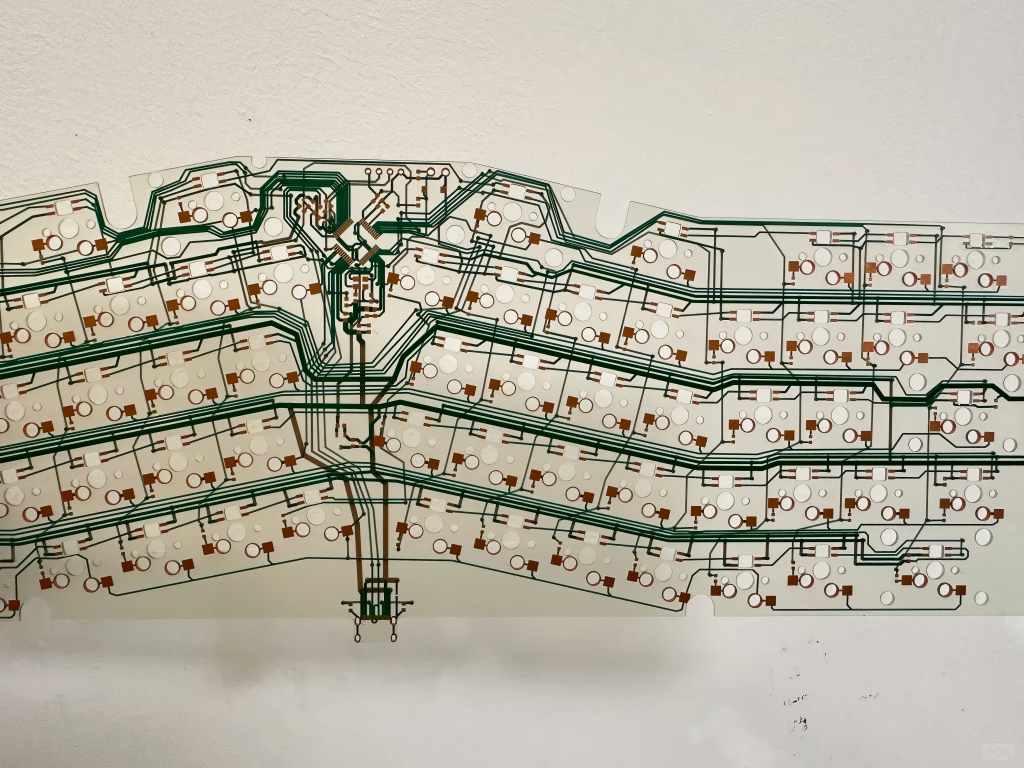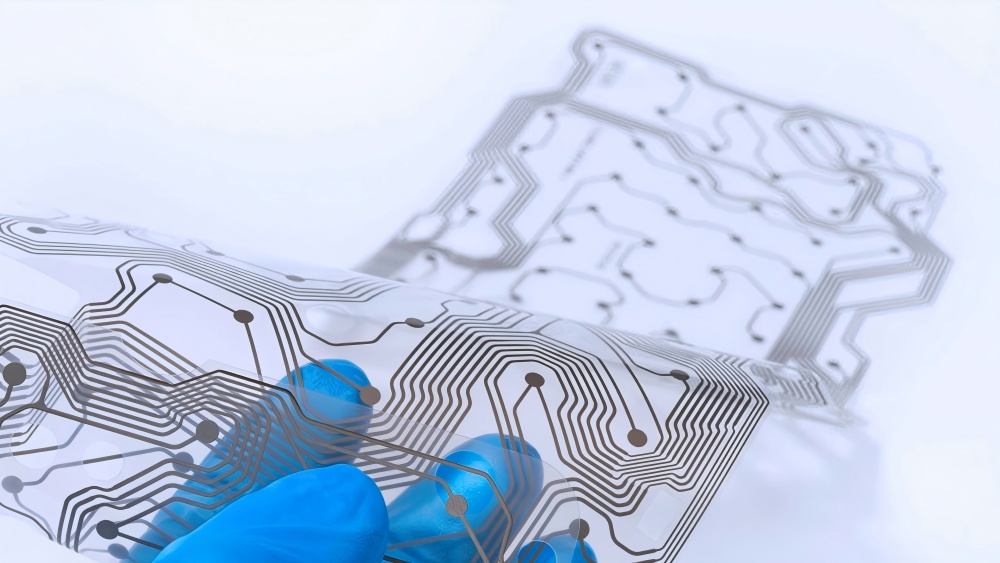Transparent flexible PCBs are the latest integrated innovation in the PCB field and are gradually attracting industry attention. With various industries continuing to promote innovation and automation, the demand for high-performance, multi-functional PCBs is growing, and the entire PCB industry is constantly evolving. As we all know, flexible PCBs are highly favored for their flexible shapes and lightweight, compact structures. As is well known, flexible PCBs are widely popular due to their flexible shapes and lightweight, compact designs. By incorporating transparent materials into flexible PCBs to achieve both aesthetic and functional benefits, they not only retain the traditional advantages of FPCs—flexibility, lightweight, and high density—but also gain transparency. The new development of transparent PCBs has led to the emergence of flexible printed circuit boards in vertical fields, which have begun to engage in PCB design and manufacturing.

What are transparent flexible PCBs?
Transparent flexible PCBs are circuit boards that can be bent and have a certain degree of flexibility without affecting their functionality. They are made from flexible materials such as polyimide or polyester film and can achieve compact circuit connections within a specified space. Transparent flexible PCBs are lightweight and durable, and it is precisely these characteristics that provide design flexibility for devices with irregular or moving parts. They enhance the reliability and service life of PCBs by reducing wiring complexity and vibration damage. They can be single-sided, double-sided, or multi-layered to meet various electrical requirements.

Applications of transparent flexible PCBs.
Transparent displays – Transparent flexible PCBs are essential in transparent displays. Devices and components that require seamless integration with transparent screens must maintain an aesthetically pleasing appearance alongside the supporting electronic PCBs. This is particularly true in OLED (organic light-emitting diode) displays. Their transparency allows the screen to display images while also enabling the content behind it to be visible through the screen. Its flexibility and transparency enable the display to bend, fold, and roll, making it widely used in flexible displays for smartphones, tablets, and wearable devices. Many signage, content display units, and video walls utilize transparent flexible PCBs and their various features to enhance the user experience.
Touch panels - Transparent flexible PCBs are also crucial in touch panels, especially for devices requiring transparent conductive layers, such as smartphones, tablets, and in-car navigation systems. Transparent flexible PCBs can serve as substrates for touch sensors, enabling touch panels to maintain transparency while offering excellent flexibility and stability.
Consumer electronics - These devices are popular due to their compact size and ease of integration. Smartwatches, smartphones, and smart devices are equipped with displays featuring transparent or semi-transparent properties. These displays are transparent when inactive and become functional during use. Their transparent and flexible characteristics allow them to closely conform to the human body surface without affecting the device's appearance. Their lightweight and slim design ensures comfort during prolonged use while maintaining the device's transparent and fashionable design. Therefore, transparent flexible PCBs are indispensable in these applications. The internal circuit layout is invisible and inaccessible to the end-user.
AR (Augmented Reality) and VR (Virtual Reality) Devices – In recent years, a new vertical technology has emerged to achieve the unique user experience of AR and VR. These technologies help visualize the required environments, scenes, and device experiences that do not exist in reality. The display components of AR and VR devices include transparent screens with flexible PCBs to meet the requirements.
Automotive Applications – Modern vehicles feature numerous intelligent and aesthetically pleasing functions that enhance the driving experience. The dashboard screen is one of the most visually appealing components of a vehicle’s interior. To seamlessly integrate the screen into the front-end assembly, it is designed with a transparent flexible PCB layout. Small sensor units, lighting systems, and indicator devices also incorporate transparent screens with flexible PCBs.
Healthcare Devices – Over time, electronics and automation have also made significant contributions to the healthcare sector. To monitor various health parameters and display them alongside medical devices, transparent screens are integrated into them. These displays provide all useful and required data through a better interface. These screens are prepared according to medical standards to withstand critical situations without deviating from key functions.

Conclusion
Due to the unique characteristics of transparent flexible PCBs, they have enormous potential for development in the short term. In the future, transparent PCB materials that perform well under harsh conditions and are compatible with electronic PCB components will emerge. With ongoing research into transparent PCB materials and the overcoming of manufacturing process obstacles, transparent flexible PCBs have already been integrated into today's applications and products.